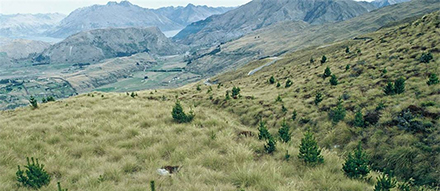Commercial forests and climate change are regularly cited as contributors to an increase in unwanted rural fires in New Zealand. However, evidence suggests other factors are exacerbating the causes and impacts of fires. The New Zealand Institute of Forestry is concerned. It is calling for current Crown land management policies to be re-examined to improve prevention rather than cure. Source: Timberbiz
For the past decade throughout New Zealand, significant unwanted fires have originated beyond forests, but impacted forest lands. Examples include the 2017 Christchurch Port Hills fires (suspected cause being ignition by powerlines) and in 2019, the Pigeon Valley fire in Tasman district (started on farmland by cultivation activities in extreme fire hazard conditions) which spread to an adjacent commercial forest.
In October 2020, the Lake Ohau fire’s suspected cause of ignition was powerlines again. This fire spread into areas of unmanaged wilding pine. In August 2020, Lake Pukaki region saw a fire spread to unmanaged wilding pines – that fire originated from a campfire.
A 2020 research project assessed New Zealand’s historical fire weather behaviour indices (such as fire rate of spread, drought levels and fuel available to burn). It found these had barely changed over the last four decades. But the management of land use has changed. For example, in the Lake Ohau and Lake Pukaki areas wilding pines are well established. Other examples of changes to land use include the removal of grazing from tussock grasslands in Central Otago and inland Canterbury.
Fuel loadings on tussock grassland have increased, as lands under tenure review have been retired from grazing. One such example is the 2019 Te Papanui Conservation Park near Middlemarch, where more than 5,000 hectares of tussock grasslands were burnt.
Unlike other countries, the Department of Conservation has no plans to reduce fuel loadings on the Crown tussock grasslands through controlled burns.
Following the extreme 2019/20 bush fires in Australia, an official inquiry received submissions. Australia’s Institute of Foresters submission pointed to the misguided focus of fire suppression strategies.
New Zealand’s Institute of Forestry concurs with the Australian Institute’s view: it’s about greater prevention efforts. President James Treadwell says “We believe New Zealand must focus on reducing the incidence and impacts of unwanted fire through better land management practices. Changes like fuel reduction burning, restrictions or prohibition of high-risk activities during very high or extreme fire danger periods, and further research to support a science-based approach to risk reduction and readiness, will get better results.”
Until the increased exposure to unwanted fires in the forest and rural landscape is minimised through better land management practices, New Zealand will continue to see a build-up of fuel loadings in the hill and high-country landscape. Unwanted fires will continue to damage the rural landscape and be costly to extinguish. A review in land management practices is urgently required.








